РњРёР “-21 против" ФР° нтомР° "
On the American side, the MacDonnell-Douglas F-4 Phantom II fighter was the main one. This heavy twin-engine two-seater (normal take-off weight of more than 20 t), created in 1958 year, was originally intended to provide air defense of American aircraft carrier connections. By the beginning of the 19b0-ies, the Phantom II, which had won a number of world records in speed, was perhaps the most popular American combat aircraft. The undoubted advantages of the F-4 should include outstanding flight characteristics for the time (maximum speed 2260 km / h, practical ceiling 16600-17900 m, practical range without suspended tanks 2380km), powerful on-board observation and sight radar station (RLS), and AIM-9 Sidewinder short-range air-to-air missiles (normal unit - four units) and all-round all-weather AIM-7 Sparrow medium-range missiles (four missiles were placed on uutoplennyh nodes in the fuselage external suspension).
American marine aviation entered the war with F-4B carrier-based fighter jets; later, advanced F-4J carrier-based aircraft joined the fight. The US Air Force had F-4C fighters by the start of the war. During the war, they were supplemented by improved F-4D aircraft, and at the final stage of the battles the Air Force received the most advanced modification of the Phantom - F-4E.
The main rival of the Phantom, the front-line fighter MiG-21, was also created in the 1958 year. Unlike the American aircraft, the Russian machine, designed to operate over the front line, at a short distance from the home airfield, belonged to a different “weight category” (the normal take-off mass of modifications used in Vietnam was less than 8 t) and had a much smaller range - about 1500 km. However, according to the other flight characteristics (maximum speed 2175-2300 km / h, practical ceiling - 18 000-19000 m), the MiG was not inferior to its American rival. The armament of the MiG-21 was also significantly weaker than that of the American, two (later four) medium-range P-3s air-to-air missiles with infrared self-homing (Soviet pirate replica of American UR AIM- 9 "Sidewinder"), as well as one (absent on a number of modifications) gun with 23 caliber or 30 mm.
As you can see, the MiG-21 and F-4 are very different planes created for solving various tasks.
After the "Tonkin incident" - the fighting of American squadrons "Maddox" and "Turner Joy" with the Vietnamese torpedo boats 2 in August 19х4 of the year - the United States decided to start an air war against the Democratic Republic of Vietnam (DRV), assisting the insurgents of South Vietnamese which, in turn, was supported by the United States. 5 August 1964, the first American bombs hit the base of the Vinh torpedo boats. The strike aircraft were covered by F-4B fighters from the Constellation aircraft carrier (CVA-64). These were the first sorties of the "Phantoms". However, during 19b4, only a few limited blows were struck at North Vietnam: before the start of a full-scale air war, the United States needed to regroup and build up forces in the region. By the beginning of February of the following year, three strike aircraft carriers with 238 aircraft and an 33 escort ship were concentrated off the coast of the DRV. February 8 from Okinawa to the South Vietnamese Danang airbase began the transfer of the first wing of the US Marine Corps, which included the 15 F-4B fighter jets. At the same time, the deployment of US Air Force squadrons equipped with F-100, F-105 and F-4C aircraft began at South Vietnamese and Taiwanese air bases. 2 March The United States embarked on a large-scale air operation "Rolling Thunder", which lasted until October 31 1968.
At the first stage of combat operations, the "Phantoms" of the air force were engaged both to accompany fighters and to attack land targets. Marine F-4B were used mainly for escorting deck attack aircraft - "Skyraders" and "Skyhawks" - and air defense fences of aircraft carrier connections from potential counterattacks of Vietnamese and Chinese aircraft.
In the initial period of the war, the Air Force and the North Vietnamese Air Defense Forces had only 25 subsonic J-5 fighters (Chinese-made MiG-17F), several Soviet MiG-15 bis, as well as Il-28 bomber. These insignificant forces could not seriously counteract the Americans flying in the sky of Vietnam, like at home. But with the help of Soviet and Chinese military specialists, the Vietnamese soon developed a tactic to use their fighters, which allowed even in the face of repeated numerical superiority of the enemy to inflict tangible blows on him. Small groups of MiGs patrolled at low altitude, out of sight of the enemy’s radar station (the Americans used long-range radar patrol aircraft — prototypes of modern Avaksovs, as well as aviation control posts stationed on ships cruising off the coast of North Vietnam and having powerful radar stations). When the enemy planes appeared, MiGs unexpectedly attacked his battle formations, shooting heavy guns loaded with guns from cannons.
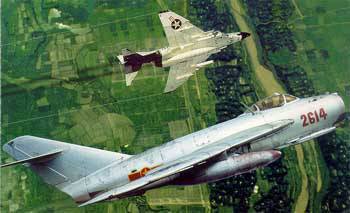 For the first time the "Phantoms" met with enemy fighters - Vietnamese MiG-17 - 2 on April 1965 of the year, but the collision ended without result.
For the first time the "Phantoms" met with enemy fighters - Vietnamese MiG-17 - 2 on April 1965 of the year, but the collision ended without result. The first real battle involving the F-4 took place on April 9. According to the American version, it proceeded as follows. In 8 hours 40 minutes US Navy fighter F-4B, taking off from the aircraft carrier "Ranger", was attacked over the sea by four Vietnamese MiG-17 aircraft. One of them was shot down by a Sparrow missile, but soon another MiG went to the tail of the Phantom and hit him with a burst from a cannon. The crew of the American aircraft - pilot T. Murphy and cameraman R. Fagan - died. There is another Chinese version of this fight. In accordance with it, the American air patrol, consisting of eight F-4B, invaded the airspace over the territorial waters, but not Vietnam, as followed from the American communication, and the PRC (in the area of Hainan Island lying in the Gulf of Tonkin). Perhaps the Americans deliberately provoked the Chinese side to take decisive action, hoping to teach them a lesson and make them more cautious in military support of the DRV. But the lesson was not instructive: at the beginning of the battle, the crew of Lieutenant Murphy did succeed in damaging one of the MiGs with a rocket (which, however, was not shot down, but returned safely to the base and was subsequently re-commissioned). Another Phantom, firing a Sidewinder rocket at another Chinese fighter, mistakenly struck the F-4B, manned by Murphy, and sent it to the bottom of the Gulf of Tonkin.
On May 12, twelve F-4Bs invaded the airspace of Yunnan Province (southwestern China) and shot down one J-5, which, according to the Chinese version, was performing a “training” flight. In response to the protest of the PRC, the Americans announced that the MiG had been destroyed over the territory of the DRV in the combat zone (however, no one tried to verify this fact).
June 4 MiG-17F link over the city of Wu-Ban attacked the top three F-4B. One "Phantom" avoided the fight and, smoking engines that worked on the "maximum", went east. Two other American aircraft were drawn into close combat on turns, where more maneuverable MiGs had advantages, and the Vietnamese were not slow to take advantage of this. After turning to 180 degrees, the Vietnamese leader from the distance 1000-1200 m fired at one of the American cars. Soon he became close with the enemy on 700 and re-opened fire. F-4B, seeking to get out of the shelling, vigorously maneuvered in height and course. The second American fighter, following his lead, made a desperate attempt to rescue the commander, trying to back, from the distance 400-500 m, “get” the MiG (the task is completely impossible, since the minimum permitted range for launching AIM-9B “Sidewind” missiles is much longer) . Slave MiG-17 opened barrage from cannons, and the second American fighter was forced to withdraw from the shelling, making a turn with a decrease. It was immediately followed by the first F-4B, which received several injuries (according to the Vietnamese command, this “Phantom” failed to reach its airfield, and it fell in Laos).
The next air battle with the participation of "Phantoms" occurred on June 17 over the city of Ninh Binh. During it, four MiG-17Fs attacked the enemy from the rear hemisphere from a distance of 100-600. They managed to shoot down two F-4B, while the Americans did not show much activity and quite randomly withdrew from the battlefield. The Vietnamese did not suffer losses, although their order of battle was also disrupted, and the control of the link was lost. Upon returning to the airfield, two Vietnamese pilots were forced to eject due to full fuel consumption, and one MiG-17 made an emergency landing at Haiphong airfield.
On the same day, the Phantoms opened their combat score: F-48, which was launched from the deck of the Midway carrier, shot down the MiG-17 fighter over Haiphong. 10 July 1965, the first victory won the F-4C from the US Air Force, shooting down two MiG-17.
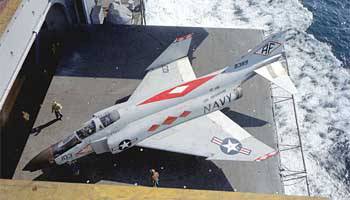 Later meetings in the sky of Northern Vietnam MiGs and "Phantoms" became commonplace. So, September 20 1965 of the year over the railway station Kep (north of Hanoi), a group of American aircraft, which was discovered by the Vietnamese radar P-35. Part of the "Phantoms" with bomb weapons attacked the station. Their cover was provided by another pair of F-4B, which patrolled at an altitude of 3000-4000 m. The Vietnamese duty link was in the air - four
Later meetings in the sky of Northern Vietnam MiGs and "Phantoms" became commonplace. So, September 20 1965 of the year over the railway station Kep (north of Hanoi), a group of American aircraft, which was discovered by the Vietnamese radar P-35. Part of the "Phantoms" with bomb weapons attacked the station. Their cover was provided by another pair of F-4B, which patrolled at an altitude of 3000-4000 m. The Vietnamese duty link was in the air - four MiG-17F, which was aimed at the enemy on commands from the ground. The leader of the first Vietnamese couple dived from the height of 6000 m and attacked the F-4B, which was performing an approach to the bombing at that time, when he visually discovered the Americans. From a distance 500 m Vietnamese pilot opened fire, after which the "Phantom" left turn with a decline began to leave from under fire. MiG continued to "sit on the tail" of the enemy and from the distance 400 m released the second turn. "Phantom" began to smoke, but continued flight. With the third long burst with 200, he was finally shot down. American pilots failed to eject. The second pair of MiGs started a fight at an altitude of 3000 m, when one of the American planes was leaving a dive after the attack, and the second was just entering the peak for entering the bombing. The Vietnamese flight commander attacked the first plane, opening fire from the 1200 distance a little prematurely. The American pilot, finding a MiG on his tail, turned on the boost, left the battlefield.
In general, it should be noted that, until the MiG-21 came onto the scene and the massive use of the C-75 anti-aircraft missile systems began, American aircraft in the sky of Vietnam behaved rather carelessly, not considering the small MiG-17 as a serious threat. For example, "Phantoms", which played the role of an escort, were often loaded with bombs. The Vietnamese sought to keep the MiGs at low altitude, where their small camouflage planes were visually less visible and almost completely invisible to the airborne radar of the Americans. Suddenly attacking fighter-bombers, the Vietnamese pilots forced them to get rid of the bomb load and, moving closer to a short distance, shot from the cannons. Escort fighters, occupying a higher air corridor, often simply did not have time to join the battle with MiGs. This forced the Americans to change tactics and reduce their cover groups to low altitudes (while being at the same level or lower than the Vietnamese fighters, the Phantoms could “see” them using their radar or visually against the sky). Using a higher speed, F-4 approached the enemy and hit him with rockets, after which they also quickly left the battlefield. If the battle turned into a “carousel” on turns, then the advantage passed to the Vietnamese, who quickly approached the enemy at a distance of less than 1000 m, where F-4, which had only rocket armament, were practically helpless.
However, the Americans soon improved their tactics again: several “Phantoms” took close combat, while one of the links allowed them to drag themselves into battle on turns, while another quickly gained height and from a distance of several kilometers attacked Sparrow MiGs. Having lost six fighters in a similar situation, the Vietnamese moved to a previously tested tactic of sudden one-time “ambush” strikes, followed by a quick exit from the battlefield.
At the end of 1966, according to the recommendations of Soviet military specialists, the DRV aircraft advanced a line of interception directly to the borders of the country, where American planes followed in tight combat formations, which hampered the maneuvering battle. Another innovation was the practice of ambushes on the ground, developed with the participation of the Chinese: MiG-17 took off from the airfields of the jump and attacked the enemy, followed in tight formation, and then quickly declined, camouflaged under the terrain, returned to the airfield.
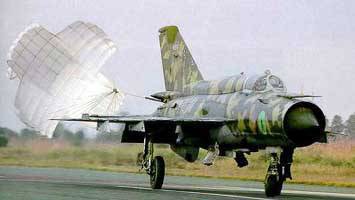 From February 1966, the main opponents of the F-4 were the supersonic MiG-21-13 (some of them were from Czechoslovakia) and the MiG-21PF-B (all-weather variant, i.e. equipped with a MiG-21PF radar sight in "tropical" performance) same as American aircraft equipped with rocket weapons - UR P-ZS with TGS or units with 55-millimeter uncontrolled aircraft missiles (NAR) C-5. The command of the Air Force and the US Navy continued to place high hopes on the F-4, believing that powerful weapons, advanced on-board radar, high speed and acceleration characteristics, combined with new tactical techniques, would provide the Phantoms with superiority over enemy aircraft. But in collisions with lighter MiG-21 F-4 began to suffer defeat after defeat. From May to December 1966, the United States lost 47 aircraft in air battles, destroying only enemy 12 fighters. A large load on the wing and somewhat lower (especially at medium altitudes) angular speeds of turns of American fighters (the Americans subsequently admitted that the Phantom generally concedes the MiG on turns), limited operational overload (6,0 versus 8,0 in MiG-21PF) and permissible angles of attack, as well as the worst controllability of the American car. It did not have an F-4 and a thrust-weight advantage: with a normal take-off mass, it was 0,74 for the F-4B, and for the MiG-21PF it was 0,79. The disadvantages of the "Phantom" in the first place should include unsatisfactory corkscrew characteristics. There was a possibility of falling into a flat spin, from which the pilot of average qualification could hardly get out. It was reported that only before 1971, the 79 "Phantoms" was lost due to falling into a corkscrew. The airborne radar of the American fighter, although it had a long range of detection and capture, had relatively low noise immunity. The cockpit of the pilot and operator were oversaturated with numerous instruments and switches. At the same time, the advantages of the Phantom, manifested in Vietnam, include some better acceleration characteristics (F-4E accelerated from speed from 600 to 1100 km / h in 20 s, and MiG-21PF in 27 c), more high rate of climb, better visibility from the cockpit and the presence of a second crew member, who monitored the air situation and promptly warned the commander about the threat from the rear hemisphere.
From February 1966, the main opponents of the F-4 were the supersonic MiG-21-13 (some of them were from Czechoslovakia) and the MiG-21PF-B (all-weather variant, i.e. equipped with a MiG-21PF radar sight in "tropical" performance) same as American aircraft equipped with rocket weapons - UR P-ZS with TGS or units with 55-millimeter uncontrolled aircraft missiles (NAR) C-5. The command of the Air Force and the US Navy continued to place high hopes on the F-4, believing that powerful weapons, advanced on-board radar, high speed and acceleration characteristics, combined with new tactical techniques, would provide the Phantoms with superiority over enemy aircraft. But in collisions with lighter MiG-21 F-4 began to suffer defeat after defeat. From May to December 1966, the United States lost 47 aircraft in air battles, destroying only enemy 12 fighters. A large load on the wing and somewhat lower (especially at medium altitudes) angular speeds of turns of American fighters (the Americans subsequently admitted that the Phantom generally concedes the MiG on turns), limited operational overload (6,0 versus 8,0 in MiG-21PF) and permissible angles of attack, as well as the worst controllability of the American car. It did not have an F-4 and a thrust-weight advantage: with a normal take-off mass, it was 0,74 for the F-4B, and for the MiG-21PF it was 0,79. The disadvantages of the "Phantom" in the first place should include unsatisfactory corkscrew characteristics. There was a possibility of falling into a flat spin, from which the pilot of average qualification could hardly get out. It was reported that only before 1971, the 79 "Phantoms" was lost due to falling into a corkscrew. The airborne radar of the American fighter, although it had a long range of detection and capture, had relatively low noise immunity. The cockpit of the pilot and operator were oversaturated with numerous instruments and switches. At the same time, the advantages of the Phantom, manifested in Vietnam, include some better acceleration characteristics (F-4E accelerated from speed from 600 to 1100 km / h in 20 s, and MiG-21PF in 27 c), more high rate of climb, better visibility from the cockpit and the presence of a second crew member, who monitored the air situation and promptly warned the commander about the threat from the rear hemisphere. The disadvantages of the MiG-21 include the short range of the radar sight (no more than 10-12 km for targets such as a fighter), a long time for a full radar radar, a poorly perceived target mark on the indicator in the cockpit, and insufficient view from the cab. To switch weapons options, the pilot had to remove one of the hands from the control levers of the aircraft. The engine of the fighter in certain modes of operation strongly smoked, which unmasked the aircraft (in clear weather, the MiG-21 could be detected at a distance of up to 30 km).
The first battle involving MiG-21 took place in Vietnam 23 on April 1966 of the year and ended without result. And April 26 "Phantoms" managed to bring down the first MiG-21, opening an account in the duel of these fighters, which continued on the fronts of many local wars for more than two decades.
The emergence of new MiGs forced the American command to more widely attract the "Phantoms" to accompany strike aircraft, finally abandoning the equipping of F-4 escort with bomb armament.
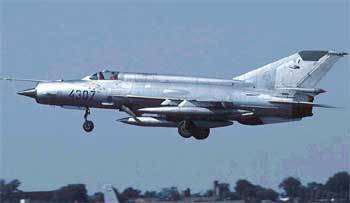 MiG-21 usually attacked the enemy at supersonic speeds, performing a rocket launch from the rear hemisphere and quickly breaking away from possible pursuit. It was difficult for the Americans to oppose anything to such tactics, which demanded high training for pilots and guidance officers of the ground command post. They also began to practice joint actions of the “twenty-first” with the MiG-17, which forced the enemy from small heights to the middle, where he was attacked by the MiG-21.
MiG-21 usually attacked the enemy at supersonic speeds, performing a rocket launch from the rear hemisphere and quickly breaking away from possible pursuit. It was difficult for the Americans to oppose anything to such tactics, which demanded high training for pilots and guidance officers of the ground command post. They also began to practice joint actions of the “twenty-first” with the MiG-17, which forced the enemy from small heights to the middle, where he was attacked by the MiG-21. In 1967, the Americans were able to somewhat improve the piloting and tactical training of their fighter pilots. Air Force combat squadrons began to receive new F-4D aircraft, upgraded to military experience. The June 5 F-4D fighter opened a combat score for the aircraft of this modification, knocking over the Hanoi MiG-17. The qualitative enhancement of the American fighter aircraft led to the fact that in the first half of 19b7 of the year during the air battles, the DRV managed to shoot down only US 15 planes. However, in the future, Vietnamese fighter aircraft again increased their effectiveness (this was due to the acquired combat experience, as well as the transition to new and modernized types of vehicles - the MiG-21PF and MiG-17F with the P-Zs guided missiles). In the first half of 1968, in the 40 battles, the Vietnamese managed to destroy the 25 enemy planes. In total, during the first stage of the air war, from April 1965 of the year to November 1968 of the year, 268 air battles were conducted over Vietnam, during which American and 244 Vietnamese planes were shot down. Including losses in 85b battles amounted to 4 F-27 and 4 MiG-20.
In May, the 1968 of the year began the Vietnamese-American negotiations in Paris, which resulted in the cessation of the bombing of the DRV with 1 in November of 19 and 8 of the year. In the sky of Vietnam there was a relative calm, military operations moved into the jungles of the south. From December 1968 to April 1972, there were only five air battles over the border areas of the DRV and South Vietnam, including four battles in the 1971 (shot down one F-4 and MiG-17 fighter, as well as an American advanced aviation aircraft OV -10A "Bronco"). The resulting pause was used by both sides to enhance the quality of the fighter groups. With the 19b8 of the year, the US Air Force in Vietnam began to receive F-4E fighter jets with improved maneuverability, built-in cannon armament and a new radar. In 1970, the 366 and 588 air force fighter wings deployed at Da Nang airbase were almost completely re-equipped with new aircraft. The US Navy aircraft carriers that participated in the fighting received an upgraded F-4J carrier-based fighter aircraft. The Soviet side transferred to the Vietnamese Air Force MiG-21PFM fighters with the GP-9 suspended cannon container, and a little later - MiG-2ShF and MiG-21МФЛ airplanes with the built-in GSH-23 cannon. In addition, China in 1968-1969 provided Vietnam with 44 fighter J-6 (licensed version of the MiG-19).
Convinced of the impossibility of achieving superiority over enemy fighters in a short time, the Americans concentrated their main efforts on improving the combat skills of their pilots. The United States Air Force organized special retraining courses for the Red Flags program, during which they worked out air battles with the Aggressor squadrons equipped with Northrop F-5 fighters imitating MiG-21 aircraft. For pilots of naval aviation, on the initiative of captain Frank Ault, 19x9 also organized the Navy Fighter Weapon School, known as the Top Gun School (familiar to us from the title movie with Tom Cruise in the title role), where for five weeks intensive training of pilots in conditions as close as possible to combat.
In June, 1971, the United States resumed raids on North Vietnam.
In March-April 1972, the massive and very successful offensive of the DRV armed forces in the south began. In an effort to prevent a complete military defeat of the Saigon government and influence the course of negotiations in Paris, the Americans stepped up the bombing of the north. In the spring of US 1972, having increased the size of aviation to 1000 combat aircraft, conducted a large-scale air operation "Freed Train" (April 9 - May 7), during which a total of well-planned powerful bomb attacks were inflicted on North Vietnamese communications and airfields which led to a significant reduction in collisions between the Phantoms and the MiGs.
16 On April, two MiG-21MFs engaged in battle with the Phantoms of the 12, and both Vietnamese aircraft were shot down.
27 On April, the F-4 team met with a pair of MiG-21 and lost one aircraft in the ensuing battle.
On May 6, a pair of "Phantoms" intercepted two MiG-21 fighters that were attempting to attack the A-7 attack aircraft, and one MiG was able to shoot down.
On the same day, the F-4 unit entered into battle with the four MiG-21, while six MiGs fired six missiles, but an experienced pilot managed to dodge them. The subsequent gulp of three more American MiG-21 missiles was still hit, but the pilot safely ejected.
May 8 Americans launched an airborne operation "Linebacker", which lasted until October October 23. The culmination of air combat in the spring of 1972 of the year was 10 in May, when the DRV aircraft performed 64 combat sorties, conducting 15 air battles, in which seven Phantoms were shot down. Those, in turn, managed to destroy two MiG-21, two MiG-17 and one J-6.
During one of the 10 battles in May, the MiG-17 link was alerted to the release of a nearby airfield. MiGs covertly, at the extremely low altitude reached the target and from the first attack shot down one “Phantom”. The second pair of the link was involved in a maneuverable air battle with the F-4 Four, which ended with the loss of one MiG-17. However, the involvement of the "Phantoms" in the air "carousel" allowed the Vietnamese to lift two MiG-21 into the air from a blocked airfield, which from the hill at an altitude of 2 km attacked the same number of F-4 and shot down both "Phantom" with only two P-3 missiles .
11 in May, two MiG-21, which played the role of "bait", brought the four F-4 to two MiG-21, which patrolled at low altitude. MiGs rapidly attacked the "Phantoms" and shot down two enemy aircraft with three missiles.
June 13 link MiG-21 intercepted a group of "Phantoms". Having penetrated the fighting order of the Americans, two Vietnamese fighters caused panic in the enemy: the "Phantoms" broke the line and began to maneuver randomly. At this time, the second pair of MiGs launched a rocket attack and shot down two F-4.
On May 18, Vietnamese aviation made 26 sorties and conducted eight air battles that cost the four Phantoms to the Americans. Vietnamese fighters suffered no losses that day. During one of the fights, two MiG-21 intercepted the link "Phantoms". The leading Vietnamese couple, Captain Igua, attacked and shot down a F-4 with a rocket with a half-turn.
In the summer of 1972, the intensity of the air battles subsided, air collisions became sporadic. So, June 12 link "Phantom" fought with two MiG-21 and lost one aircraft. The next day, two more air battles took place, costing the Americans two more F-4s (the Vietnamese side did not suffer losses).
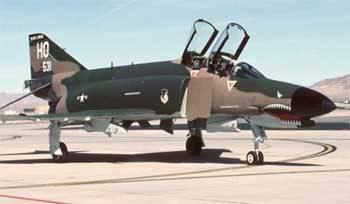 As a result of the “air offensive” undertaken by the Americans in the spring and summer of 1972, by the fall, at the 360 combat theater, tactical fighters of the US Air Force and 96 naval fighters, most of which were the “Phantoms” of the last modifications, opposed only 187 of DRV fighters (MiG-17 , MiG-21 J-6). It should be noted that out of this number, only the 71 aircraft (including the 31 MiG-21) was combat-ready.
As a result of the “air offensive” undertaken by the Americans in the spring and summer of 1972, by the fall, at the 360 combat theater, tactical fighters of the US Air Force and 96 naval fighters, most of which were the “Phantoms” of the last modifications, opposed only 187 of DRV fighters (MiG-17 , MiG-21 J-6). It should be noted that out of this number, only the 71 aircraft (including the 31 MiG-21) was combat-ready. In September, the 1972 of the year was the only air battle in which a Soviet pilot was operating against the Phantoms on the Vietnamese side. On the two-seater training aircraft MiG-21US, which did not have weapons, the Vietnamese fighter pilot and Soviet instructor worked out the piloting technique. At a distance of 8 km from their airfield, they received a warning of approaching the Phantoms link at low altitude. By this time, only 800 liters of fuel remained in the MiG tanks. In an effort to get out of the strike, the fighter pilot performed a barrel with a slip, which disrupted the attack of the first American couple. Then the MiG-XNUMHUS was attacked twice by the enemy’s second pair of aircraft, but in a forced bend, he again left the attack, and the missiles passed by. The third attack by the Americans also proved to be unsuccessful, but the vigorous maneuvering of the MiG at the very ground with the afterburner turned on the last remnants of fuel, and the crew made the only right decision - to eject. During the climb, the aircraft engine suddenly stopped, and at that moment a missile launched from the F-21 hit the MiG. Fortunately, the crew managed to land safely on parachutes.
In December, the Americans launched the last large-scale operation "Linebacker-2", aimed at negotiating certain conditions at the Paris talks. The operation planned further destruction of the infrastructure of North Vietnam and the disabling of its military facilities using massive air strikes involving a large number of Boeing B-52 strategic bombers.
However, the preparation of such a powerful strike as the "Linebacker-2" could not be carried out unnoticed, and this enabled the Vietnamese side to develop a series of countermeasures. A surprise for the Americans was the use of the MiG-21 from disguised jump sites, where the planes were delivered on the external suspension of heavy Mi-6 helicopters, and launched with the help of powder accelerators.
For 12 days of the operation "Linebacker-2" (18-29 December), seven American planes (including four Phantoms) and three Vietnamese MiG-21 were shot down during eight air battles. At the same time, the “twenty first” tried not to get involved in fights on turns, and after performing the interception on “supersonic” (regardless of the result) they quickly left the battlefield. However, forced in some cases to be drawn into the dog dump, the MiG-21 fighters maintained at medium altitude an advantage over the modernized F-4E and F-4J, losing it only on the ground.
22 December 1972 of the year to intercept the Americans was raised two MiG-21, one of which was shot down by the "Phantom". 23 December four MIG-21 took off, knocking down one F-4. December 27 Vietnamese fighter aircraft again engaged in battle with American aircraft, destroying two Phantoms. December 28 from the airfield Noy-Bai to intercept a group of American aircraft, detected by radar posts, took off two duty MiG-21. When they got close to the enemy at low altitude (300 m) and received guidance commands from the ground, two minutes after takeoff, the Vietnamese turned on the fast and the furious and put their cars into climb mode. During the subsequent reversal with rebuilding, the slave visually discovered the “Phantoms” link at a distance of about eight kilometers and asked the lead for permission to attack. The Americans late noticed the appearance of the enemy and did not have time to start a defensive maneuver, as a result one F-4 was hit by a rocket. After completing the attack, the slave began to get attached to the leader, at which point the commander of the Vietnamese couple noticed two more Phantoms. With an energetic maneuver, he violated the combat order of the Americans and the "compartment" of his slave, which he had lost sight of at that time, from enemy aircraft. Two separate maneuver battles ensued. The lead MiG managed to break away from the F-4, abruptly went to the ground, and the slave, turning on bends, hit another “Phantom”, but when trying to get out of the battle his plane was damaged by shrapnel of an American rocket that exploded several meters from the fuselage. Vietnamese pilot safely catapulted.
During the B-52 heavy bomber raids on Hanoi, the F-4 played the role of false targets several times: the F-4 link, which had a good grouping, was tightly built. Judging by the testimony of the Vietnamese radar, the flight was one big bomber-class target. While on the imaginary B-52 interceptors induced. the target disappeared in the air, divided into four aircraft, which themselves counter-attacked the Vietnamese fighters.
A total of 1972 air combat took place between American and Vietnamese aircraft in 201, resulting in the loss of 54 Vietnamese fighter aircraft (including 36 MiG-21 and one MiG-21US) and 90 American vehicles (including 74 F-4 fighter and two reconnaissance aircraft RF-4C. Thus, the MiG-21 destroyed b7 enemy aircraft).
The last victory in the course of the Vietnamese war (according to American data, 197-I in a row) was won by the Phantom of January 12 of 1973. F-4J (commander - Lieutenant Viktor Kovale-ski), taking off from the deck of the aircraft carrier "Midway", "Sidewinder" rocket shot down a MiG-17 fighter. Ironically, Viktor Kovaleski’s F-4J was also the last Phantom shot down in the sky of Vietnam two days later (the pilot and operator managed to escape).
27 January 1973, the United States announced the withdrawal of troops from Vietnam, in fact, admitting their defeat in this war.
The war spawned its heroes. The most productive crew of the Phantom in Vietnam were pilot S. Richie and cameraman C. Bellevue, who shot down five MiGs (besides, another plane C. Bellevue shot down with another pilot). Pilot Ha Van Tuke was a peculiar champion among the Vietnamese, who joined the MiG-21 in a battle with 36 enemy aircraft and shot down the aircraft of the commander of the American fighter wing Colonel D. Folin.
It should be recognized that the rivalry between MiGs and "Phantoms" in the Vietnamese sky ended with the defeat of the American machine: the F-4 fighters for the entire period of hostilities from 1966 to 1972 managed to shoot down the 54 of the MiG-21 aircraft, and for the same period, "twenty first" destroyed 103 "Phantom". In addition, the loss of one American aircraft, as a rule, led to the death or capture of two crew members. In addition, Phantom cost American taxpayers in an amount several times higher than the cost of a MiG-21.
In general, the F-4 aircraft had to tackle inherent problems in Vietnam: created as a heavy interceptor, designed to defend carrier strike formations from raids of high-speed bombers and anti-ship cruise missiles, Phantom was used in the struggle to gain air supremacy, opposing more adapted for This role of the MiG-21. Therefore, the defeat of the Americans is explained not by the mistakes of the McDonnell-Douglas designers, who managed to create an outstanding combat aircraft for their time, but by the lack of a specialized light combat fighter in the United States capable of equal resistance to the MiG-21. Despite the fact that the USAF had F-102 and F-106 fighter jets, Lockheed F-104 and Northrop F-5 fighters, these machines were significantly inferior to both the MiG-21 and F -4 and not used in air battles over the territory of the DRV. Light cruise supersonic fighter "Vout F-8" "Kruseyder", which originally had high hopes (by the beginning of the war, the ratio of these aircraft and F-4B on the decks of American aircraft carriers deployed in the Gulf of Tonkin, was about equal), also did not meet expectations , yielding MiG-21 on the main flight characteristics.
However, as a tactical strike aircraft, the F-4 proved to be excellent. "Phantoms" were widely involved in strikes on particularly important objects (bridges, power stations) and on enemy railways. To solve these problems, the aircraft, as a rule, were armed with free-fall bombs and NAR caliber 70 and 127 mm. Since April, 196 5 has been practicing the “free hunt” of pairs or links of “Phantoms” over the railways and highways of Vietnam. The planes continuously combed communications of the enemy, in places completely paralyzing movement during the daytime.
The experience of the Vietnam War had a huge impact on military aircraft in both the United States and the USSR. The Americans reacted to the defeat of the Phantom in air battles with the creation of the fourth generation of highly maneuverable fighter jets - F-15 Eagle, F-16 Freed Fighter, designed to beat the MiG-21 in close combat maneuver (the influence of the MiG on the US military was so great that at the formation of the appearance of the heavy F-15 fighter at a sufficiently high level, it was proposed to completely abandon the Sparrow missiles and the on-board radar, focusing on improving the maneuvering characteristics). At the same time, the "universal soldier" F-4 influenced the minds of Russian aviation theorists, which was reflected in the modifications of the third generation fighter.
However, after the end of the Vietnam War, the confrontation between MiGs and Phantoms did not stop in the sky. MiG-21 and F-4 converged in air battles over the Suez Canal, in the sky of Sinai, over the Nile Delta and Syria in 1973, in Lebanon at the end of 1970 - early 1980, in the years of the Iran-Iraq war 1980- 1988's.
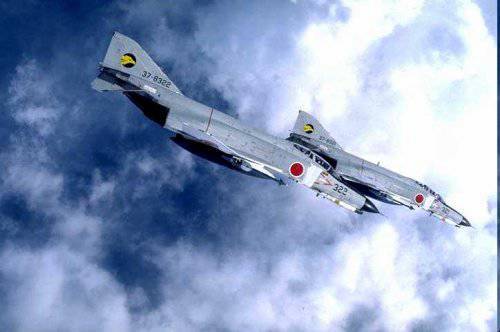
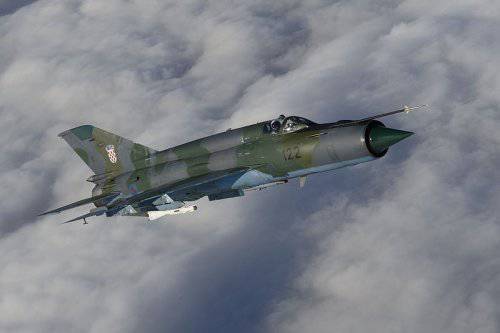
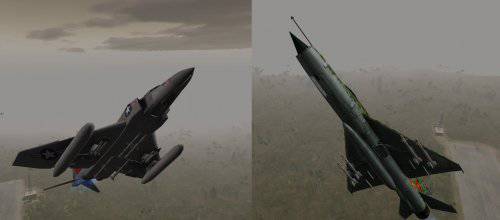
Information